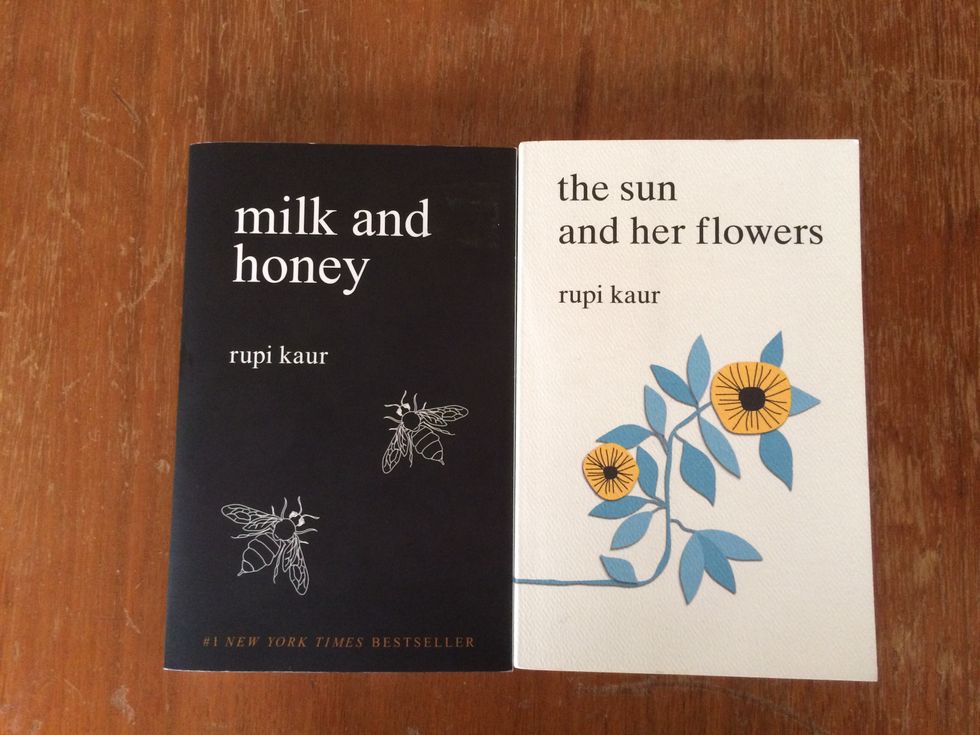A while back, I wrote about "Milk and Honey" by Rupi Kaur and shared some of my favorite pieces within the impactful collection. After finishing that book, I immediately preordered Kaur’s sequel, "The Sun and Her Flowers," which was released in October. I have recently finished "The Sun and Her Flowers" and remain to be in awe of Kaur’s ability to tell a story with several short poems. I was even amazed to see her style of writing grow from her first book!
Kaur’s sequel collection has a very clear storyline, which I felt was missing in "Milk and Honey." "The Sun and Her Flowers" starts at the end of a relationship that seems to have impacted Kaur a lot. In the first few sections, we see her try to recover from this relationship, at times drawing inspiration from her parents and her family and the sacrifices they made. We see a few moments in the latter half of the book that make you wonder if maybe this relationship wasn’t healthy in some way, but it’s not until the very last section, "blooming," where she finally starts to move on from this potentially toxic relationship. We even see her struggle to find footing in a new relationship as a result of her heartbreak.
This situation, as painful as it may be, is one that a lot of us can relate to. We’ve all had one relationship that we’ve clung to, as unhealthy as it may be, and once it ends, it’s easy to feel like the air has been sucked out of your lungs, and like you’re gasping to get it back. You eventually do move on, but it’s not as quickly as other people will move on. You’re stuck believing that, because the only attention you can get from a partner is the kind your last partner provided (even if it’s not good attention), you’re incapable of finding anyone to treat you better. It makes the pain of your partner leaving even worse than before.
"Milk and Honey" touches on a lot of powerful moments within Kaur’s life as she learns different things about herself and the people she loves, but despite how poignant the book is, it feels more like a highlight reel on various events in her life. I didn’t get a full sense that we were moving from point A to point B in "Milk and Honey," while "The Sun and Her Flowers" provided the link I was looking for while reading. I was able to sense the story Kaur was providing, which shows how much she has grown as a writer since publishing "Milk and Honey."
Relationship issues aside, "The Sun and Her Flowers" promotes growth and positivity. It shows us that we may be in tough situations where we feel down in the dumps and like the clouds are going to stick around for forever, but we need to keep holding on because better days will come in due time. You can and will move on from whatever pain you are feeling, and someday you’ll look back at the pain you felt and think of it as a distant memory. "Milk and Honey" does this too, but you don’t really get the sense that she has healed a lot by the end of the book. In "The Sun and Her Flowers," however, it’s clear that she has grown from her pain, and instead of letting it define her, she allows it to make her a stronger person. She has allowed herself to move on from past loves that weren’t right for her and begun promoting a movement of self-love for herself, a move that is inspiring not just to women, but to everyone.
While I thoroughly enjoyed both "Milk and Honey" and "The Sun and Her Flowers," I think I enjoyed the sequel a little more than the first one. Both books are powerful and cover emotional subjects, but "The Sun and Her Flowers" proved to be a story of growth and recovery rather than simply a rehash of the struggles Kaur faced. Though those struggles are important to talk about in our society, I felt satisfied knowing that she was able to show growth in both her writing and in herself as a person.

















